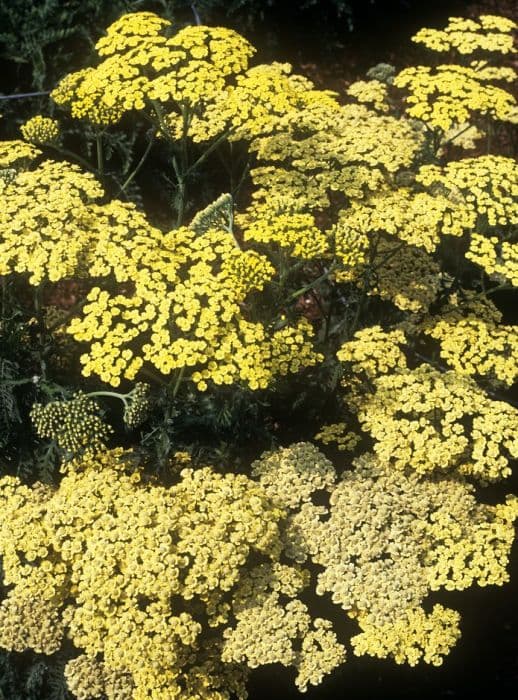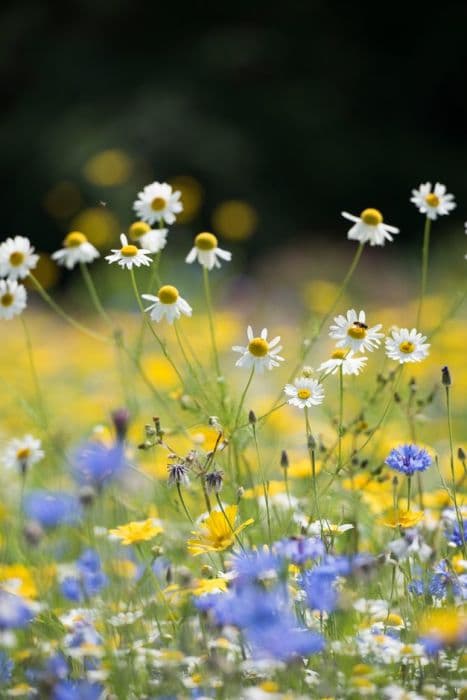Dahlia Dahlia 'Finchcocks' (WL)

ABOUT
Dahlia 'Finchcocks' (WL) is a striking and vibrant flowering plant known for its showy blossoms. The 'WL' in its name refers to its classification within the dahlia world; it is a Waterlily type dahlia, which means its flowers have a unique characteristic. Rather than the tightly packed petals typical of many dahlias, the 'Finchcocks' features broad and slightly curved petals, resembling the gentle shape of a waterlily. The flowers of Dahlia 'Finchcocks' are typically large and eye-catching with layered petals that create a full and lush appearance. These petals can exhibit a gradation of color, which often starts at a deep hue at the base and softens as it reaches the tips, adding depth and interest to the bloom. The colors themselves are dynamic and can range from deep reds to bright purples or vivid pinks, often with different shades highlighting the flower's form. Additionally, some blossoms may showcase a contrast of colors, like a blend of warm oranges and yellows, giving each flower a fiery appearance that stands out in any garden space. The foliage of this plant is deep green, providing a lush backdrop that makes the floral colors even more prominent. The leaves are typically compound with pointed leaflets, which add to the plant's overall texture. The stems are strong enough to support the weight of the large flowers, which can be particularly striking when the plant is in full bloom. Overall, the Dahlia 'Finchcocks' is admired for its ornamental blossoms that make a bold statement in both garden beds and floral arrangements, being a favorite among gardeners and floral designers alike for its exceptional beauty and form.
About this plant
 Names
NamesSynonyms
Dahlia, Garden Dahlia, Georgina.
Common names
Dahlia 'Finchcocks' (WL)
 Toxicity
ToxicityTo humans
Dahlias are generally considered non-toxic to humans. While they are not meant for consumption, accidental ingestion of dahlia parts typically does not result in serious harm. However, some individuals may experience mild gastrointestinal discomfort or allergic reactions if they are sensitive to the plant.
To pets
Dahlias are not typically toxic to pets such as cats and dogs. If a pet were to ingest parts of the dahlia, it is unlikely that this would lead to serious health issues. However, as with any non-food plant, consumption could potentially cause mild gastrointestinal upset, such as vomiting or diarrhea, especially if consumed in large quantities.
 Characteristics
CharacteristicsLife cycle
Perennials
Foliage type
Deciduous
Color of leaves
Green
Flower color
Pink
Height
4 feet (1.22 meters)
Spread
2 feet (0.61 meters)
Plant type
Bulb
Hardiness zones
8
Native area
Mexico
Benefits
 General Benefits
General Benefits- Ornamental Appeal: Adds vibrant color and dynamic form to gardens and landscapes with its stunning flowers.
- Attracts Pollinators: Serves as a food source for pollinators such as bees and butterflies, contributing to the biodiversity of the area.
- Long Blooming Season: Offers a prolonged period of visual interest, usually from mid-summer until the first frosts of fall.
- Versatile Use: Suitable for a range of gardening applications, including borders, containers, and as cut flowers for indoor arrangements.
- Wide Color Range: Provides a vast array of color options to suit different garden designs and color schemes.
- Easy to Propagate: Can be easily propagated through division or seeds, allowing gardeners to expand their collection.
- Cultural Significance: Recognized for its beauty, the Dahlia is the national flower of Mexico and has historical and cultural importance.
 Medical Properties
Medical PropertiesThis plant is not used for medical purposes.
 Air-purifying Qualities
Air-purifying QualitiesThis plant is not specifically known for air purifying qualities.
 Other Uses
Other Uses- Dahlia 'Finchcocks' can be used as a natural fabric dye, offering hues ranging from soft pastels to rich purples depending on the mordant used.
- The petals of the Dahlia can be used to make a colorful addition to salads, providing an edible garnish that is both aesthetically pleasing and safe to consume.
- In crafting, dried Dahlia petals can be incorporated into homemade paper, adding texture and color variation to the final product.
- The Dahlia's strong stems and fibrous material can be stripped down and woven to create biodegradable garden ties that are both functional and garden-friendly.
- Flowers like Dahlia 'Finchcocks' can be used in potpourri mixtures for their color and shape, even after their scent has faded.
- Dahlia tubers can be carved into artistic stamps for creative projects and homemade stationery, taking advantage of their unique shapes and textures.
- During the Victorian era, Dahlias were symbolically used to express sentiments and emotions in the language of flowers, and can still be used today for this purpose.
- The Dahlia's vibrant flowers can act as a natural pest deterrent in gardens, thanks to their bold colors which can confuse or repel certain insect pests.
- Photographers and artists may use Dahlias as subjects for their work, capturing the intricate details and vivid colors of the flowers.
- As educational tools, different varieties of Dahlias can be used to teach botany and horticulture, demonstrating plant diversity and the results of selective breeding.
Interesting Facts
 Feng Shui
Feng ShuiThe Dahlia is not used in Feng Shui practice.
 Zodiac Sign Compitability
Zodiac Sign CompitabilityThe Dahlia is not used in astrology practice.
 Plant Symbolism
Plant Symbolism- Dignity: Given the dignified appearance of the Dahlia 'Finchcocks' with its upright posture and layered petals, it symbolizes poise and self-respect.
- Commitment: These flowers, blooming from midsummer to autumn, demonstrate endurance and a long-lasting bond, thus representing commitment in relationships.
- Inner Strength: Dahlias are known to withstand adverse conditions, making them a symbol of inner strength and the ability to withstand challenges.
- Creativity: With its intricate petal patterns and vibrant colors, the Dahlia 'Finchcocks' is often associated with innovation and artistic expression.
- Change and Transition: As dahlias come in a variety of appearances, they are also symbols of embracing change and positive transitions in life.
- Diversity: The vast range of colors and forms of dahlias, including 'Finchcocks', signifies diversity and the varied aspects of life.
 Water
WaterDahlias, including the 'Finchcocks' variety, need a consistent watering schedule to thrive, usually around 1-2 inches of water per week, depending on climate conditions. It's vital to water them deeply to encourage strong root growth. Aim to water them at the base, avoiding wetting the foliage, which can lead to fungal diseases. During the active growing season, you might need to water a couple of times per week, especially in hot, dry weather. Cut back on watering as the plant matures and the weather cools, and always ensure good drainage to prevent root rot.
 Light
LightDahlias, such as the 'Finchcocks', require full sun to bloom well, which means they should receive at least 6 to 8 hours of direct sunlight daily. Place them in a location where they're exposed to morning sunlight and protected from the intense afternoon heat if possible. They can tolerate partial shade, but too little light can result in fewer blooms and leggy plants.
 Temperature
TemperatureDahlia 'Finchcocks' thrives in temperate conditions and can grow in temperatures ranging from approximately 60 to 70 degrees Fahrenheit during the day. They can withstand a minimum temperature of around 50 degrees Fahrenheit at night. If the temperature drops below 50 degrees Fahrenheit, it's time to dig up tubers for winter storage, while temperatures above 75 degrees Fahrenheit can stress the plants and require additional watering to keep them cool.
 Pruning
PruningPruning dahlias, such as 'Finchcocks', is important to promote vigorous growth and large flowers. Pinch out the growing tips when the plant is about 16 inches tall to encourage bushiness. Deadhead spent flowers regularly to encourage continued blooming. Prune any damaged or diseased stems throughout the growing season, and after the first frost hits, cut the plant back to the ground before digging up the tubers for storage.
 Cleaning
CleaningAs needed
 Soil
SoilDahlias thrive in a fertile, well-drained soil with a pH between 6.5 and 7.0. A good mix for Dahlia 'Finchcocks' would be equal parts garden soil, peat moss, and coarse sand or perlite to ensure proper drainage. Incorporating compost into the soil mix can also help with fertility and moisture retention.
 Repotting
RepottingDahlias, including the 'Finchcocks' variety, don't need to be repotted frequently; they are typically replanted annually. Tubers are dug up after the first frost in the fall, stored for the winter, and then replanted in the spring.
 Humidity & Misting
Humidity & MistingDahlias like Dahlia 'Finchcocks' prefer moderate humidity conditions. They do not require high humidity to thrive; ambient outdoor humidity levels are generally adequate for their growth.
 Suitable locations
Suitable locationsIndoor
Ensure bright light, consistent moisture, and pot with drainage.
Outdoor
Plant after frost, full sun, well-draining soil, staking may be needed.
Hardiness zone
8-11 USDA
 Life cycle
Life cycleDahlia 'Finchcocks' (Waterlily type) begins its life as a tuber, which is planted in the spring once the threat of frost has passed. The tuber sprouts to form a stem, leaves, and eventually, a small plant. As the weather warms, the plant grows rapidly, producing lush, bushy foliage and multiple budding sites. By mid-summer, the dahlia blooms, showcasing its waterlily-like flowers with layers of vibrant petals. The flowering stage can last until the first frost of fall, at which point the plant will die back. Before winter sets in, the tubers are often dug up and stored in a cool, dry place to overwinter, to be replanted the following spring.
 Propogation
PropogationPropogation time
Late Winter - Spring
The Dahlia 'Finchcocks' (Waterlily) is typically propagated by division of tubers, with the optimal time for this method being in the spring, just before the last expected frost when the soil is workable and warm enough to encourage growth. Division involves carefully separating the tuber clumps while making sure that each division has at least one eye, from which new growth will sprout. The cut surfaces are usually allowed to dry and callous over for a day before planting to reduce the risk of rot. The divisions should then be planted at a depth of about 6 inches (approximately 15 centimeters), at a spacing of about 18 inches (approximately 46 centimeters) apart to allow enough room for growth. This method of propagation ensures genetic consistency and is an efficient way to expand your collection of Dahlias or replace older plants that may not be performing as well.









